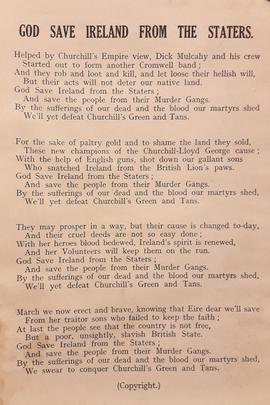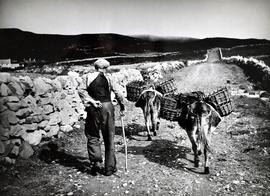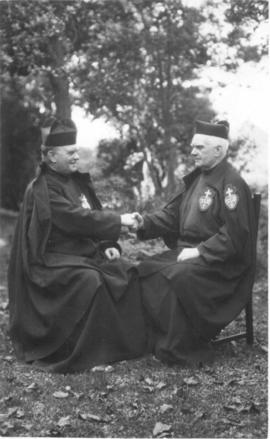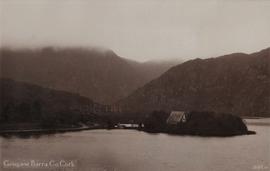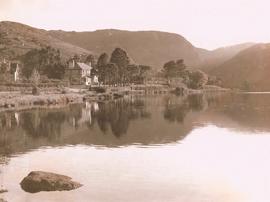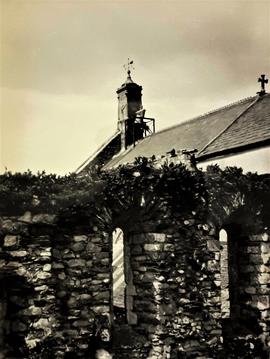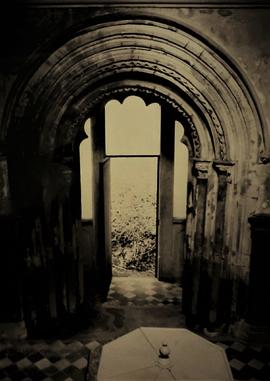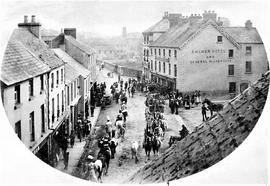God save Ireland from the Staters
- IE CA CP/3/16/3/71
- Part
- c.1922
Part of Irish Capuchin Archives
A republican flier titled ‘God save Ireland from the Staters’ criticising the military forces of the Free State and referring to them as ‘Churchill’s Green Tans’.

